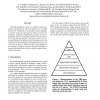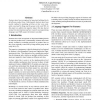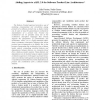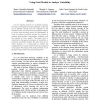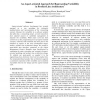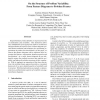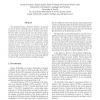VAMOS
2007
Springer
14 years 9 months ago
2007
Springer
The global telephone system is a complex transmission network, the features of which are defined to a very high level by ITU-T standards. It is therefore a prime candidate at whi...
VAMOS
2007
Springer
14 years 9 months ago
2007
Springer
Variability modeling techniques are used to specify variable aspects of members of a family of related software artifacts. Instances of variability models are then used to effici...
VAMOS
2007
Springer
14 years 9 months ago
2007
Springer
Features have been recognized as important building blocks of software product lines. Unfortunately, features have been mostly confined to modeling activities as they were origina...
VAMOS
2007
Springer
14 years 9 months ago
2007
Springer
The Feature–Oriented approach provides a way of modelling commonalities and variabilities among products of a software product line. A feature model can be used as input for gen...
VAMOS
2007
Springer
14 years 9 months ago
2007
Springer
On our ongoing research on variability analysis, two major drawbacks have been identified: a) the lack of an effective tracing from the rationale to the selected variant, and b) t...
VAMOS
2007
Springer
14 years 9 months ago
2007
Springer
Variability modeling is at the heart of product line engineering. Variability models entail features and architectural elements, technical customization aspects, sales and marketi...
VAMOS
2007
Springer
14 years 9 months ago
2007
Springer
A short theatrical exaggeration (but not too much) which describes practical problems with variability as experienced by real-world software developers. Real issue, there are no p...
VAMOS
2007
Springer
14 years 9 months ago
2007
Springer
Aspect-oriented software development has recently emerged as a new paradigm for systematic modularization and representation of the crosscutting concern. Because the variability i...
VAMOS
2007
Springer
14 years 9 months ago
2007
Springer
Requirements for product families are expressed in terms of commonality and variability. This distinction allows early identification of an appropriate software architecture and ...
VAMOS
2007
Springer
14 years 9 months ago
2007
Springer
The automated analysis of feature models is recognized as one of the key challenges for automated software development in the context of Software Product Lines (SPL). However, aft...
